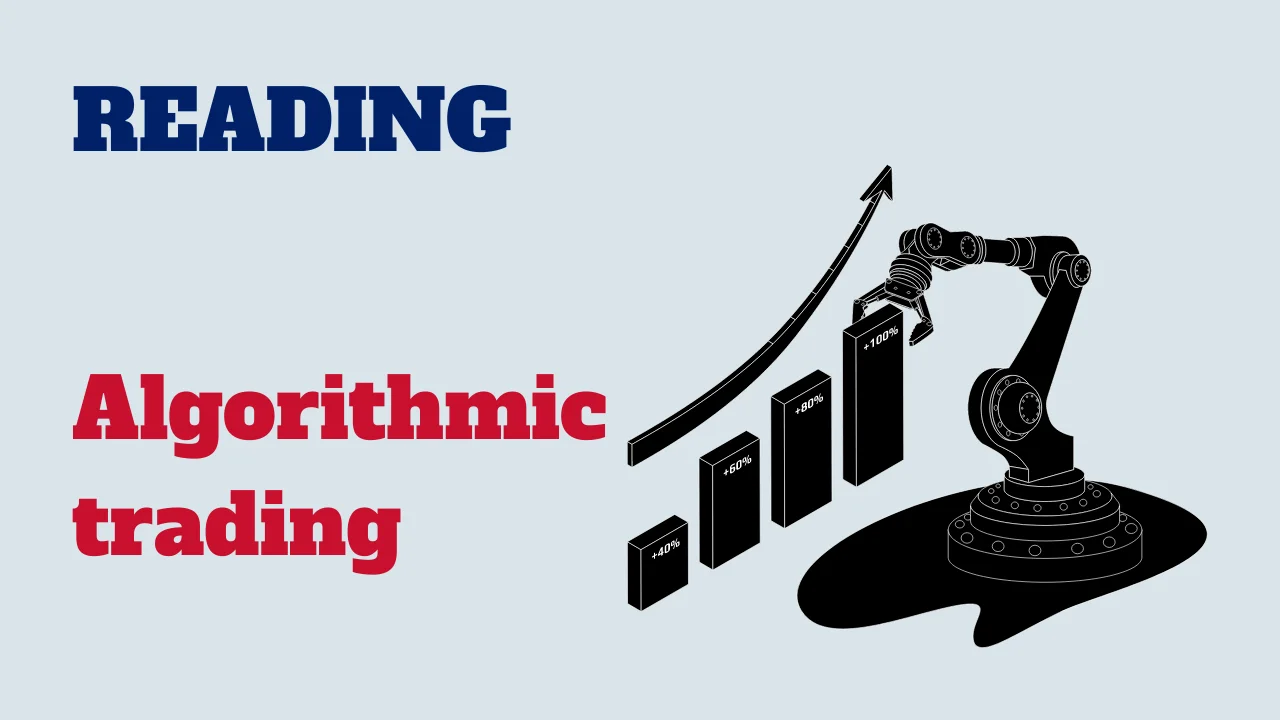Welcome to an examination of algorithmic trading, a revolutionary method transforming the landscape of financial markets. In this reading activity, we’ll delve into the principles, strategies, and implications of algorithmic trading, also known as automated trading.

From its inception to its widespread adoption by both retail and institutional traders, algorithmic trading has reshaped the way trades are executed in the modern era.
Text: Algorithmic trading
Algorithmic trading, also known as algo trading, involves the use of computer algorithms to automate trading decisions in financial markets. These algorithms follow predefined rules and strategies to execute trades at optimal speeds and frequencies, often faster and more efficiently than human traders. Algorithmic trading has revolutionized the financial industry by enhancing trading accuracy, reducing transaction costs, and increasing market liquidity.
One of the primary advantages of algorithmic trading is its ability to execute trades at high speeds, often in milliseconds, which is crucial in markets where prices can change rapidly. High-frequency trading (HFT), a subset of algorithmic trading, takes this to the extreme by executing a large number of orders at extremely fast speeds. HFT strategies can capitalize on minute price discrepancies across different markets or securities, generating profits from small but frequent price changes.
Algorithms can be programmed to follow a variety of trading strategies, such as statistical arbitrage, trend following, and market making. Statistical arbitrage, for instance, involves identifying price inefficiencies between related securities and executing trades to profit from the convergence of prices. Trend-following algorithms analyze historical price data to identify patterns and trends, making trades that align with these detected trends.
Another significant benefit of algorithmic trading is the reduction of human error and emotional bias. By automating the trading process, algorithms can adhere strictly to predefined strategies, avoiding the pitfalls of impulsive or irrational decisions that human traders might make under stress or emotion.
Algorithmic trading also contributes to market efficiency by providing liquidity and facilitating smoother price discovery. However, it has also raised concerns about market stability and fairness. The flash crash of 2010, where the U.S. stock market experienced a sudden and severe drop in prices, highlighted the potential risks of algorithmic trading. Regulators and market participants continue to work on improving oversight and implementing safeguards to mitigate such risks.
In conclusion, algorithmic trading has transformed the financial markets by enhancing trading efficiency, reducing costs, and increasing liquidity. While it offers significant advantages, it also poses challenges that require careful management to ensure market stability and fairness. As technology continues to advance, the role of algorithmic trading in the financial industry is likely to grow even more prominent.
Comprehension questions
Congratulations on completing the discovery of algorithmic trading! By examining the intricacies of automated trading systems, we have gained valuable insights into the evolution and impact of algorithmic strategies on financial markets. Through the study of systematic trading, market dynamics, and regulatory challenges, we have deepened our understanding of the complexities inherent in algorithmic trading.



